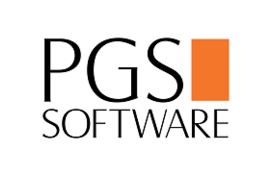Remote Workshops – How To Get The Most Out Of Them

Amid the COVID-19 pandemic, travel bans have been issued and meetings of all kinds cancelled… If you’re in a business where client-facing workshops are an integral part of your work (like us) then this hits home particularly hard. Questions might come to mind like: how do I keep my colleagues’ attention? How can I run this meeting as effectively as possible?
We have been working remotely with our clients many times during the course of the 15 years we’ve been operating. As such, we have conducted or participated in numerous online workshops, and we’d like to share our experience with you to support your business when face-to-face meetings just aren’t an option.
So let’s dive right in and look at 4 points to consider when holding a remote workshop. At the end of this post, we’ll provide you with a simple checklist to tick off all the boxes at your next remote workshop.
PURPOSE AND AGENDA
The first step is to define the purpose of the meeting and determine its duration. The next crucial thing is to specify the workshop output. Then the meeting agenda should be drawn up, with the meeting purposes in mind.
Each item on the agenda should come with a note saying when a given issue is considered to be tackled, which items need more time, what can be postponed for later or be discussed at another meeting. Select a specific output (go/no-go) so you would know if the meeting is going as planned. E.g.: if a given item on the agenda is a discussion, a list of insights, conclusions and actions might be its output.
Each item must come with a clearly defined deadline. At the same time, you have to decide what will happen if in the given time you don’t develop an output that allows you to continue the workshop. Can you postpone an item for later? Is it critical for the project? Or maybe it’s a dead end that you should just skip and move on?
The agenda should not be too optimistic time-wise or too ambitious: you should always expect delays and be able to flexibly adapt to them.
If possible, put an extra task on the agenda and encourage participants to do it before the workshop. Perhaps it could take the form of research to be discussed at the meeting? Remember that doing that type of “homework” takes time so make sure to set it well in advance.
DURATION
The meeting should not take more than 6 hours (ideally 4 hours, including breaks). If 6 hours won’t be enough, divide the workshop into 2 days.
Make sure to start on time, both the entire workshop and its individual parts after breaks. Set a timer, preferably with a bell. It’s helpful when all participants can see the timer.
Arrange for breaks: our teams usually take 10-minute breaks every 50 minutes or every 2 hours of the meeting.
When determining the frequency of breaks and the length of sessions, remember that:
- breaks should naturally follow issues on the agenda that have been tackled;
- before an issue is discussed, you should announce how much time it is going to take, what its goal is and inform others that it will be followed by a break;
- breaks should be put on the agenda.
MODERATOR ALMIGHTY
Moderators are key figures in remote workshops.
They should not get involved in the subject matter of the workshop and their main task is to run it efficiently and deliver outputs. If moderators get involved in the discussion, the agenda may fall apart.
At the beginning of the workshop, they basically make a deal with the whole group. It’s a set of good practices, but it can be subject to group discussion before the workshop so that participants could comment it or add some points. Exemplary terms of such a deal are provided below (see: Materials to download).
The moderators’ job is to keep the meeting on track and to announce breaks.
They also decide who is responsible for taking notes. The note taker may have difficulties balancing participation in the meeting and taking notes, so it is a good practice to change them after every break.
Additionally, moderators should verify the agenda and decide if it is necessary to rearrange it after each break.
Moderators monitor levels of mental fatigue and motivation. Depending on the situation, they should either inspire the team, ease up, or end the meeting if emotions prevail. That is why it is critical that moderators be empathic yet goal-oriented and have experience in workshop moderation.
They should assign roles to other participants, e.g. indicate a person who will handle unfinished discussions, dead ends, topics postponed for later).
Be careful: the more tired the team, the more alert and active a moderator should be.
TOOLS AND RULES
We recommend that participants use microphones in headsets, and not those in computers or speakers. Do not use the keyboard.
If you don’t have the floor, be sure to mute your microphone. The moderator should be able to manually mute participants and keep reminding them about this rule.
Use cameras if possible.
When you are done speaking, wait three seconds to make sure that despite the slowdown your message has reached everyone and give them a moment to respond.
Make sure each participant has access to the necessary tools to add comments so that others can see them. Make sure not to interrupt them.
Meeting minutes should be shared with everyone after the meeting.
SUMMARY
Holding a remote workshop may not be rocket science, but there are some things you’ll want to consider if you want to get the most out of it. Having a moderator and a clear-set agenda are probably the most important aspects, without which the whole endeavour could become a messy affair.
To make sure your next remote workshop runs smoothly, we’ve compiled a list of tool that will be useful for you. If you’re interested in learning more about moderating workshops, feel free to contact us and we’ll help you along the way!
Download:
Remote Workshops – Moderator’s Checklist
